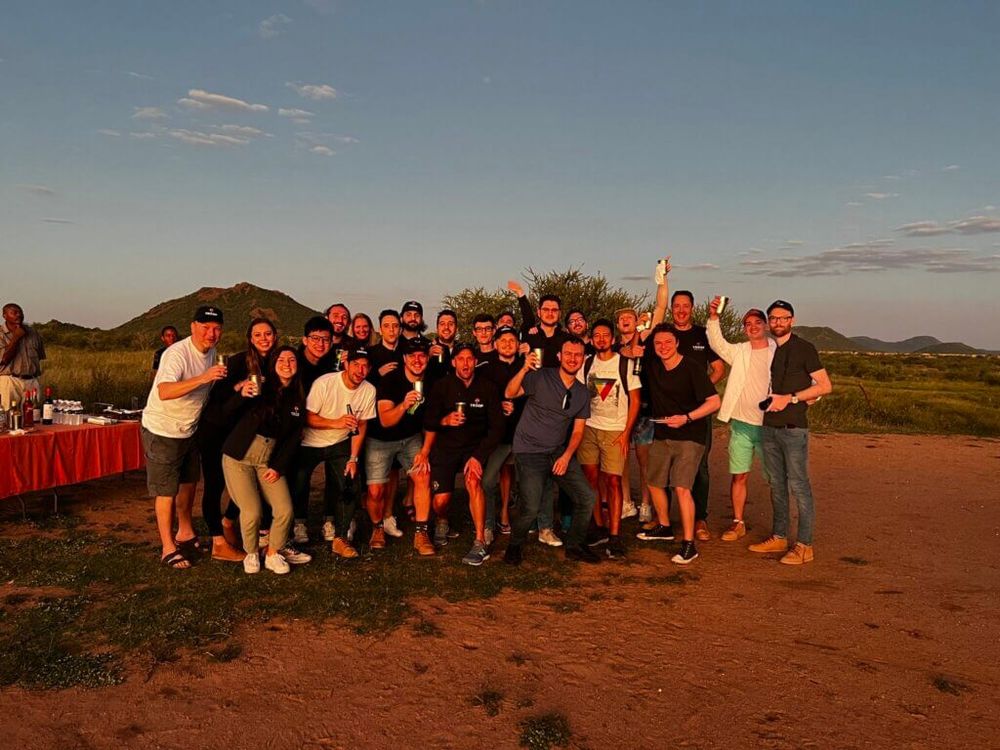5 Advantages to Having In-Person Meetings
When the COVID-19 pandemic hit, the opportunity of hosting an in-person meeting online served as a lifeline for businesses. This allowed teams to stay connected and to keep working on projects from a distance, something that years ago would have seemed impossible.
Virtual meetings are essential in today's world, but the technology comes with some disadvantages. Meaning can be lost, faces that have been condensed into a small square on your screen are less expressive, and people's attention can eventually stray back to their bottomless inbox. As convenient as virtual meetings are, they have also led us to truly value and understand the importance of connecting with others in-person, given the lack of human interaction during the continuous lockdowns.
As a way to incentivize our readers, we have listed some of our personal favorite advantages as to having in-person meetings.
The benefits of having in-person meetings
More transparent communication
How often have you struggled to understand the tone of a coworker's email reply? Understanding text-based communication may be challenging, especially when speaking to people from different cultures or across borders. A one-line reply, an exclamation point, or a misplaced emoji can all be confusing.
Videoconferencing isn’t much better, as body language and other nonverbal cues are stripped away. Even while it's tough to pinpoint a precise percentage, according to Forbes, the 7-38-55 rule indicates that only 7% of all communication is done through verbal communication, whereas the nonverbal component of our daily communication, such as the tonality of our voice and body language, make up 38% and 55% respectively. Facial expressions, voice inflections, hand gestures, and eye contact all serve to transmit meaning and prevent misunderstandings of the speaker's message.
Everyone is heard
In a virtual meeting, any connection lag makes it challenging to express issues without interrupting or speaking over another member. In order to remedy this, some video conferencing software now has a "raise hand" capability that you can use to indicate that you have something to say. However, the meeting host may overlook these notifications. Additionally, they may cause discomfort for those attendees who already struggle with meeting anxiety.

Things operate much more smoothly in face-to-face sessions. When we are poised to start and end speaking, as well as when we are prepared to give the floor to another person, we deliberately employ body language as a social cue. This helps to ensure that everybody is being heard.
In-person meetings drive stronger connections
We continue to place a premium on face-to-face encounters despite the fact that the majority of business interactions take place online, whether through email, virtual meetings, or social media. According to a recent HubSpot survey, 95% of the individuals questioned said in-person meetings are essential for long-term business relationships. Face-to-face interactions give more possibilities to create links between people and reinforce existing social ties. They allow for casual small conversation, which could risk coming off as improper or insincere in a more official video conferencing setting. Before or after an in-person meeting, a quick conversation about football, cuisine, or Netflix might be just as important to building a strong professional relationship as anything else on the schedule. There is a thin line between connecting and meeting, and the smallest of things could really make the difference.

By demonstrating that you are willing to make time in your schedule for them, an in-person encounter also communicates how much you appreciate your client's time and business. Respect should be reciprocated. The strongest business relationships tend to be with the customers who make the effort to visit you in person rather than just clicking on an invitation link.
Are face-to-face meetings more successful?
A Harvard Business Review study revealed that a face-to-face request is 34 times more successful than an email. A request made in person is seen as more earnest than one made over email, especially one that is unsolicited. Because of spam emails and suspicious attachments, we have learned to distrust the inbox.
For that reason, in-person encounters are vital to establishing a baseline level of trust and understanding between two or more participants, especially early on in a professional partnership. A face-to-face meeting enhances your chances of success if you're proposing a new idea or making an audacious demand that calls for the client to place their trust in you.
Enhanced participation through in-person meetings
Despite your best efforts, some participants in virtual meetings are just more likely to participate than others, creating an imbalanced social dynamic that could actively discourage effective collaboration. While the extroverts will steal the show by facilitating the conversation and setting the agenda, the more reserved team members will often observe and passively analyze what is being said.
A good meeting host can avoid this by asking participants for their opinions at important points in the conversation, however this can be awkward, especially in bigger gatherings where everyone's contribution isn't always required. Face-to-face interactions allow these two personality groupings to get along better and have meetings that are more fruitful and positive.

As we all know, nothing can replace the collective sparkle of when individuals come together in person. That enthusiasm, that connection, and the feeling of belonging...
One of our core values at TROOP is the ancient African philosophy of Ubuntu, “I am because we are.” Cultivating relationships with one another and spreading collectivism are a part of our company culture and in-person meetings help nurture these sentiments.
Check out how a law firm saved $100,000 on travel costs with TROOP, where we help businesses make decisions that not only cut costs but also reduce carbon emissions and save attendees hours of travel time. See how we're making a difference.